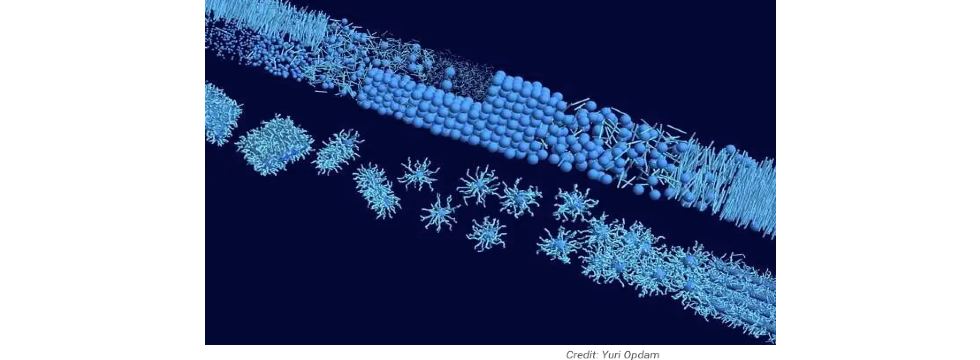Predicting The Phase Stability Of Soft Matter

Soft matter is an important class of material that generally consists of colloidal particles and/or polymers in a liquid medium. For certain compositions, these types of systems tend to separate and segregate (micro)phases into coexisting phases that differ in composition, structure and properties. PhD researcher Joeri Opdam developed theoretical methods to accurately predict the phase behavior of soft matter systems composed of colloidal mixtures and block copolymers, which is crucial for their applications in products such as coatings, pharmaceuticals and food.
Colloidal particles and polymers are important building blocks for the manufacture of new materials. Furthermore, they are ubiquitous in so-called “soft matter”, which refers to industrial products such as paint, mayonnaise and toothpaste, as well as natural systems such as clay, blood and living cells. Such systems exhibit phase behavior comparable to atoms and molecules whereby, depending on the concentration of colloidal and/or polymeric components, different phases such as a liquid or a (liquid) crystal are adopted. In a colloidal dispersion containing particles of different sizes and/or shapes or in solutions of block copolymers, the interactions between the different components can induce phase separation. The system is then no longer homogeneous, but segregates into coexisting phases with different compositions. For many applications it is desirable to avoid phase separation, but in certain cases it may be a desirable effect to separate components using phase transitions or to induce stratification.
In his Ph.D. research improved Opdam theoretical concepts that were originally developed to study the phase behavior of colloid/polymer mixtures, but which can now be applied to colloidal mixtures. Using this theoretical model, he mapped the stability regions of different types of (coexisting) phases for colloidal mixtures for a wide range of size ratios, shape parameters and concentrations. The model predictions are in good agreement with experiments and computer simulations of employees. In addition, the theory revealed a variety of interesting phenomena, such as the ability to separate into five different coexisting phases in a simple dispersion containing only two kinds of hard particles.
Grid model
Block copolymers can be spontaneously arranged in macroscopic phases with periodic domains at the nanometer scale. Using a lattice model based on self-consistent field theory, Opdam showed how solvents can be used to manipulate the size and shape of these domains that can be used to fabricate block copolymer materials with specific optical or electronic properties. Furthermore, he showed how the surface affinity of block copolymer surface modifiers in automotive coating formulations is affected by drying. The results supported experimental findings, showing that the bulk and surface distribution of block copolymers can differ significantly between the wet coating formulation and the cured coating.
Theoretical models provide a rapid method to estimate how certain parameters affect phase transitions and can therefore be used to guide experimental and computational work. This research is therefore an important step towards understanding and efficient use of colloidal mixtures and block copolymers, helping to design soft matter systems with desired properties.
Elastic fields enhance understanding of chiral molecular crystals
More information:
Joeri Opdam, Phase transitions of hard colloidal mixtures and soft block copolymers.



